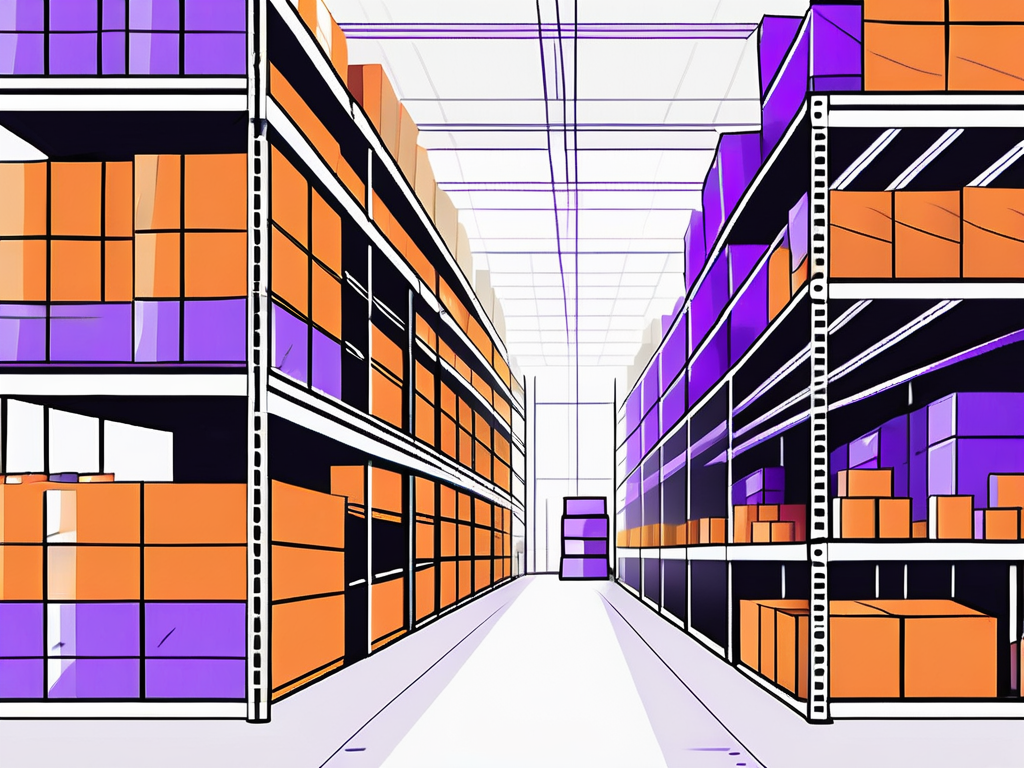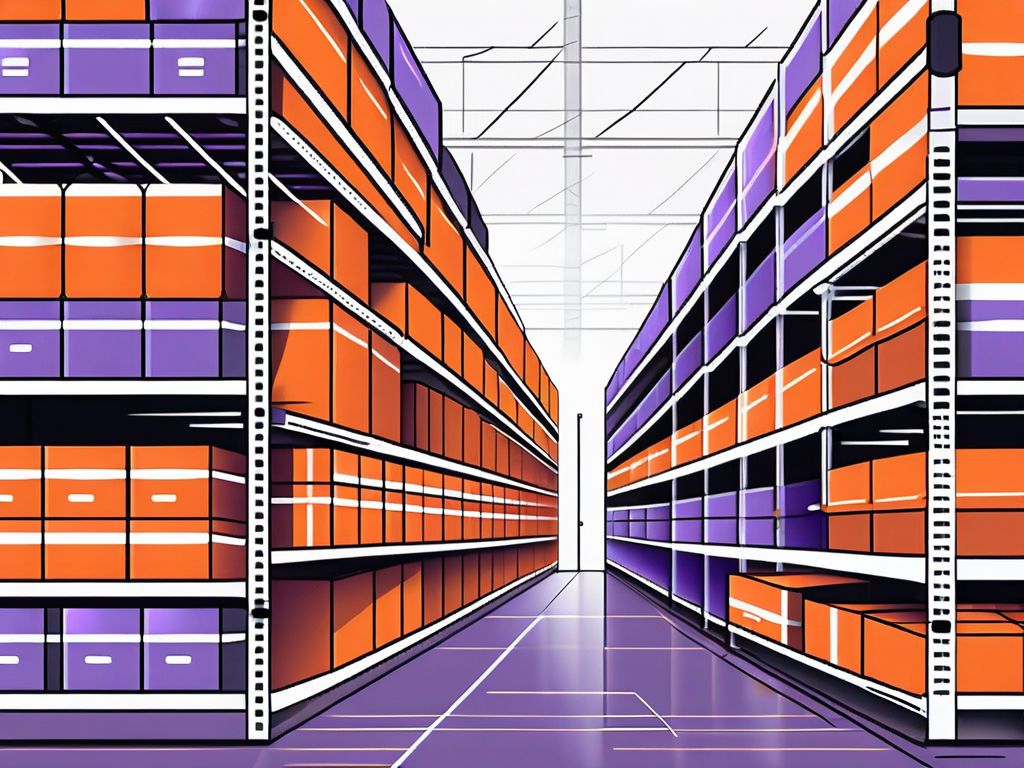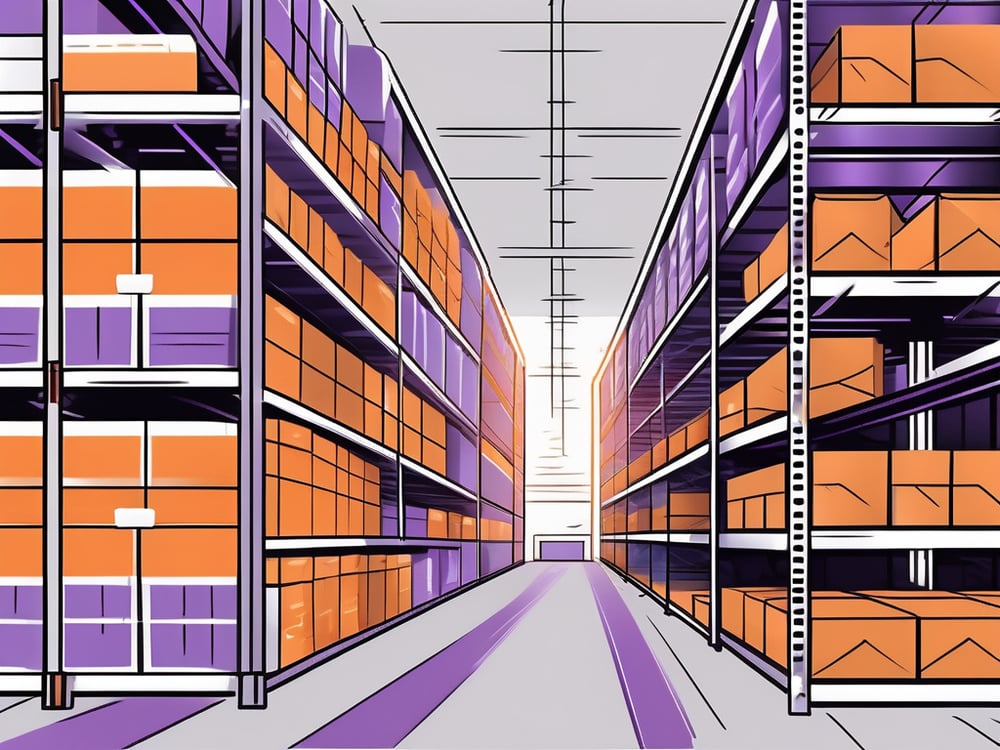Did you know that the average warehouse worker walks approximately 10 miles per day? That’s the equivalent of walking from one end of New York City to the other! With such extensive physical exertion, it’s crucial for warehouse operations to be as efficient as possible.
In this article, we will explore:
- Various strategies to enhance warehouse efficiency
- Understanding its importance
- Implementing the latest technological advancements
Table of Contents
Toggle4 BEST Strategies for Improving Warehouse Efficiency
In today’s competitive business landscape, efficient warehouse operations are crucial for success. A well-optimized warehouse:
- Ensures timely order fulfillment
- Enhances customer satisfaction
- Supports a smooth supply chain
Let’s explore some effective strategies for boosting warehouse efficiency.
Strategy 1: Implementing Warehouse Automation
Warehouse automation utilizes technology and machinery to streamline processes and reduce manual labor. Automated systems handle tasks like inventory tracking, order picking, and shipping, which increases speed and accuracy while reducing errors and labor costs. This allows employees to focus on value-added tasks, such as quality control and customer service.
Key Considerations:
- Nature of Products: Ensure automation suits the product type.
- Order Volume: Match automation scale to order volume.
- Cost-Benefit Analysis: Evaluate the return on investment before implementing automation.
Strategy 2: Optimizing Warehouse Layout and Design
The layout and design of a warehouse significantly impact its efficiency. By strategically placing storage racks, workstations, and equipment, you can minimize travel distances, reduce congestion, and enhance overall workflow. An optimized layout ensures smooth movement of goods from receiving to shipping, reducing bottlenecks and delays.
Factors to Consider:
- Product Demand: Place high-demand items for easy access.
- Order Frequency: Position frequently picked items strategically.
- Shipping Requirements: Align layout with shipping needs.
- Ergonomics: Design workstations to enhance employee productivity and reduce injury risk.
Strategy 3: Enhancing Inventory Management
Effective inventory management is essential for optimizing warehouse operations. Implementing inventory tracking systems, setting reorder points, and conducting regular audits help maintain accurate inventory counts, reduce stockouts, and prevent overstocking.
Advanced Techniques:
- ABC Analysis: Prioritize high-value items.
- Just-in-Time Inventory: Minimize holding costs by timing inventory arrival with demand.
Strategy 4: Training and Employee Engagement
Investing in employee training and engagement is key to improving warehouse efficiency. Well-trained and motivated employees perform tasks with greater accuracy and productivity. Providing ongoing training programs, implementing performance incentives, and fostering a positive work culture can significantly enhance engagement.
Employee Engagement Strategies:
- Ongoing Training: Regularly update employees on best practices.
- Performance Incentives: Reward high performance to boost motivation.
- Inclusive Decision-Making: Involve employees in process improvement initiatives.
- Positive Work Culture: Create an environment where employees feel valued and empowered.
Evaluating Current Warehouse Operations
The first step towards improving warehouse efficiency is to evaluate the existing operations. This involves identifying inefficiencies and areas for improvement. Let’s explore some techniques and tools for measuring warehouse efficiency.

When evaluating current warehouse operations, it is crucial to consider not only the physical layout of the warehouse but also the technology and processes in place. Understanding how these elements interact and impact each other is key to optimizing efficiency and productivity.
Identifying Inefficiencies in Warehouse Operations
One way to identify inefficiencies is to conduct a thorough analysis of the warehouse processes. This includes examining workflows, observing worker activities, and analyzing data on order fulfillment, inventory accuracy, and cycle times. By pinpointing bottlenecks and areas of waste, warehouse managers can target improvements and develop solutions.
Furthermore, conducting regular meetings with warehouse staff to gather insights and feedback can provide valuable information on potential inefficiencies. Employees who are directly involved in day-to-day operations often have unique perspectives that can uncover hidden issues.
Tools for Measuring Warehouse Efficiency
There are various tools available to measure warehouse efficiency. One such tool is the warehouse management system (WMS), which enables real-time monitoring and tracking of inventory, orders, and workflows.
Additionally, data analytics tools can provide insights into key performance indicators (KPIs) such as order accuracy, on-time deliveries, and utilization rates. These tools help warehouse managers make informed decisions and identify areas for improvement.
Implementing a continuous improvement mindset within the warehouse team can also contribute to enhancing efficiency. Encouraging employees to suggest process improvements and providing training on new technologies can lead to a culture of innovation and optimization.
Warehouse Efficiency and the Main Challenges Involved
Efficiency is the key to success in any warehouse. But what exactly do we mean by warehouse efficiency? Simply put, it refers to the ability of a warehouse to maximize operational output while minimizing costs, time, and resources. When a warehouse operates efficiently, it can fulfill customer orders quickly, accurately, and at a lower cost, ultimately boosting customer satisfaction and profits.

Efficiency plays a vital role in warehouse management. It ensures the smooth flow of operations, minimizes errors, and optimizes the use of available resources. Let’s take a closer look at the importance of warehouse efficiency.
Defining Warehouse Efficiency
In the context of a warehouse, efficiency can be defined as achieving maximum output with minimum input. It involves streamlining processes, reducing waste, and eliminating unnecessary steps to achieve the desired goals. Warehouse efficiency includes factors like:
- Order picking accuracy
- Inventory management
- Cycle time
- Storage capacity utilization
- Labor productivity
Importance of Warehouse Efficiency
Efficiency in a warehouse is crucial for several reasons. Firstly, it ensures customer satisfaction by enabling quick order fulfillment, accurate deliveries, and timely response to customer inquiries. Secondly, it minimizes costs by reducing labor requirements, eliminating waste, and optimizing resource allocation. Lastly, it improves the overall competitiveness of a warehouse by enabling cost-effective operations and enhancing the ability to adapt to changing market demands.
The Role of Technology in Warehouse Efficiency
Technology continues to revolutionize warehouse operations, offering new opportunities for increased efficiency and productivity. Let’s explore some key technologies that play a crucial role in warehouse efficiency.
Warehouse Management Systems (WMS)
A warehouse management system (WMS) is a software solution that helps manage and control warehouse operations. It provides real-time visibility into inventory, automates workflows, and optimizes resource allocation. With features like barcode scanning, task assignment, and order tracking, WMS ensures seamless coordination and improves overall efficiency.
But what makes WMS truly remarkable is its ability to adapt to the unique needs of each warehouse. Whether it’s a small-scale operation or a large distribution center, WMS can be customized to meet specific requirements. From inventory management to labor scheduling, WMS streamlines processes, reduces errors, and maximizes productivity.
The Impact of IoT in Warehousing
The Internet of Things (IoT) has transformed the warehouse landscape by connecting various devices and systems. IoT-enabled sensors and devices can monitor inventory levels, track shipments, and even predict maintenance needs. By harnessing the power of IoT, warehouses can achieve better inventory accuracy, reduce errors, and enhance supply chain visibility.
Imagine a warehouse where every item is equipped with a smart tag that communicates its location, condition, and even its expiration date. IoT sensors embedded in the shelves can detect when inventory levels are running low and automatically trigger a replenishment order. This level of implementing warehouse automation not only saves time but also minimizes the risk of stockouts and delays.
The Future of AI and Robotics in Warehousing
The future of warehouse efficiency lies in the integration of artificial intelligence (AI) and robotics. AI-powered algorithms can optimize picking routes, predict demand, and detect anomalies in inventory data. Robotics, such as automated guided vehicles (AGVs) and robotic arms, can handle repetitive tasks, further reducing labor requirements and increasing overall efficiency.
Picture a warehouse where AGVs seamlessly navigate through aisles, picking up items and delivering them to the packing station. These intelligent robots can adapt to changing layouts, avoid obstacles, and even communicate with each other to optimize their paths. With AI and robotics working hand in hand, warehouses can achieve unprecedented levels of speed, accuracy, and cost-effectiveness.
As technology continues to advance, the possibilities for improving warehouse efficiency are endless. From WMS to IoT and AI-powered robotics, these innovations are reshaping the way warehouses operate, enabling businesses to meet the demands of a fast-paced and ever-evolving market.
Improve the Efficiency of Your Warehouse with These Tips and Watch It Soar
In the fast-paced world of warehousing, efficiency is the cornerstone of success. By understanding the importance of warehouse efficiency, evaluating current operations, and implementing effective strategies, warehouses can optimize their operations and stay ahead of the competition.
Embracing technological advancements like automation, WMS, IoT, and AI will further propel warehouse efficiency into the future. So, let’s strive for efficiency and make our warehouses the epitome of productivity!






